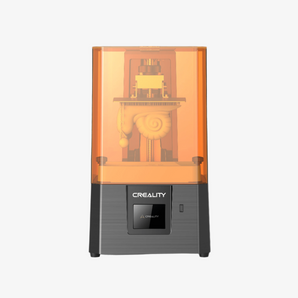Imagine this: You're a tabletop game enthusiast looking to print a detailed miniature of your newest character. You want sharp features, defined armor, and a fierce expression. You fire up your 3D printer, but the result is... underwhelming. Blurry edges. Soft details. Disappointment.
Now rewind. What if you had used a different type of 3D printer?
Welcome to the world of LCD and FDM 3D printing — two of the most popular (and very different) technologies shaping how makers, hobbyists, and small businesses create. But what’s the difference between them? And which one’s better for your needs?
The Basics: How Do They Work?
FDM (Fused Deposition Modeling)
FDM printers melt a solid plastic filament and push it through a heated nozzle, drawing the shape of each layer directly onto a build plate. It moves line by line, layer by layer, gradually stacking the model from the bottom up.
It’s a bit like decorating a cake with icing — the nozzle extrudes material exactly where it’s needed.
LCD (Liquid Crystal Display Resin Printing)
LCD printers use UV light and liquid resin. Instead of a nozzle, they have a UV light source shining through an LCD screen. The screen displays a black-and-white image of each layer — light passes through the clear areas and hardens the resin in that exact shape. The whole layer cures at once, then the platform lifts up and the next layer is exposed.
This method allows for extremely fine detail and smooth surfaces.
Print Quality: Resolution and Finish
FDM prints tend to show visible layer lines, especially on curved surfaces. With good tuning, the quality is decent, but you’ll often need sanding and painting to get a smooth finish.
LCD printers produce ultra-smooth surfaces right out of the vat. Since the light hardens each layer uniformly, you get sharp edges, crisp details, and virtually no layer artifacts — even on tiny parts.
Why it matters: If your project needs high visual fidelity — like facial expressions or intricate patterns — LCD wins hands-down.
Application Scenarios: What Are You Printing?
FDM is great for practical parts — phone stands, brackets, mechanical prototypes, even furniture accessories. If you need something strong, big, or functional, FDM can handle it.
LCD is the go-to for artistic and detailed work — miniatures, jewelry masters, dental models, and collectibles. The level of surface detail and precision is hard to beat.
You’re printing a Star Wars Stormtrooper helmet? Use FDM — it’s large, doesn’t need extreme detail, and post-processing is easier. You want to print a one-inch-tall wizard with a staff and flowing beard for tabletop gaming? LCD all the way.
Post-Processing: Cleanup and Workflow
FDM prints usually just need their supports removed — maybe a little sanding or painting, and you’re done. That’s ideal if you're making things with your kids, teaching in a classroom, or just want to print and go.
LCD printing is a bit more like darkroom photography: you’ll wash the model in isopropyl alcohol, cure it under a UV lamp, and handle uncured resin carefully. If your workspace is well-ventilated and you don’t mind the extra steps, it becomes part of the craft — and the visual payoff is clear.
Safety & Smell: Where Are You Printing?
FDM printing is generally safe indoors. You’ll smell some warm plastic (especially with ABS), but it’s not overpowering. With decent ventilation, you’re fine.
LCD resin is a chemical. Uncured resin can irritate skin and eyes, and the fumes (though improving with low-odor resins) still require good airflow. Gloves and masks are a must during handling and cleanup.
No matter what you’re creating — sturdy parts or stunning details — there’s a 3D printer that fits your style. FDM brings practicality, LCD delivers precision. Pick the one that powers your ideas — or better yet, unlock the best of both worlds.








































